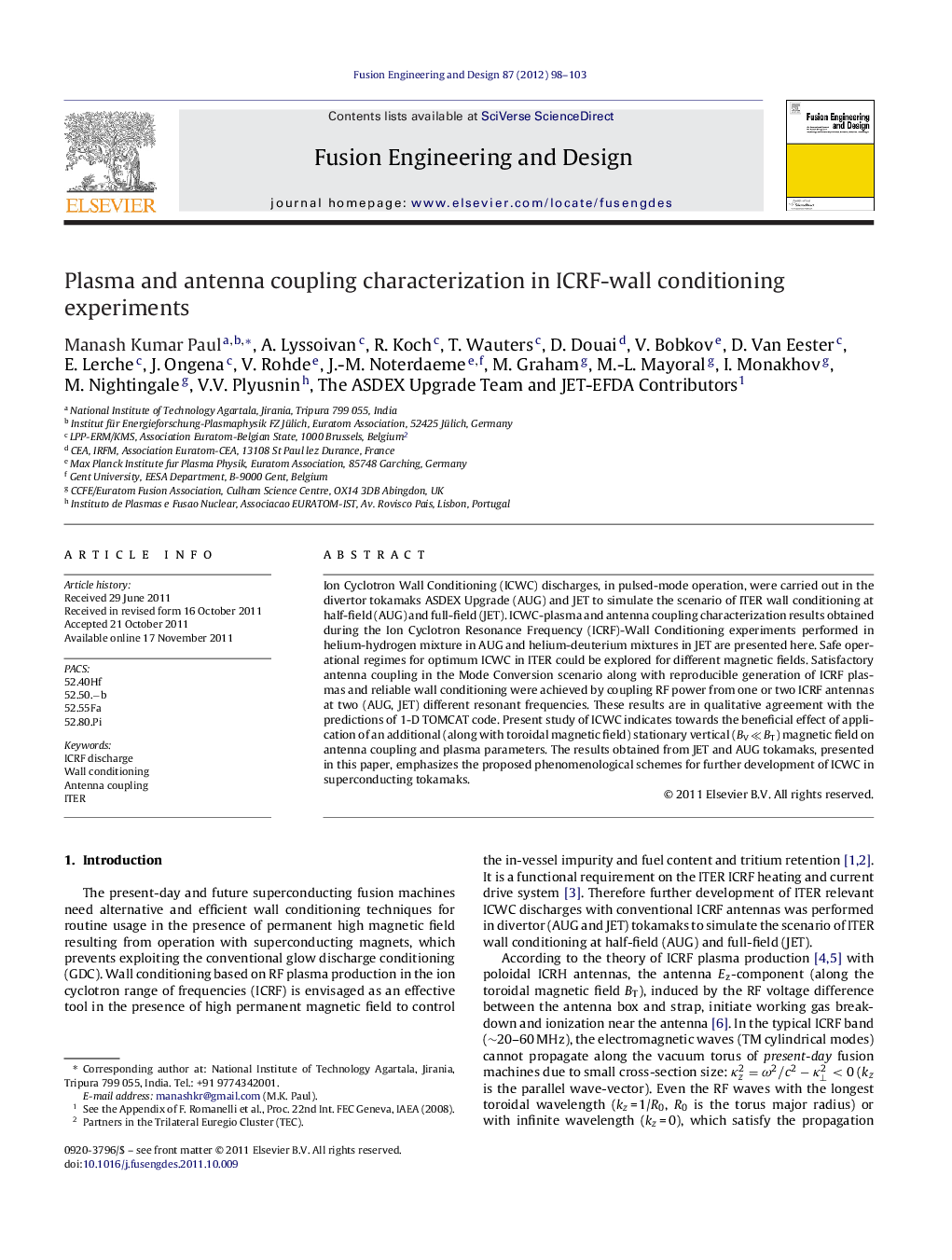| Article ID | Journal | Published Year | Pages | File Type |
|---|---|---|---|---|
| 271669 | Fusion Engineering and Design | 2012 | 6 Pages |
Ion Cyclotron Wall Conditioning (ICWC) discharges, in pulsed-mode operation, were carried out in the divertor tokamaks ASDEX Upgrade (AUG) and JET to simulate the scenario of ITER wall conditioning at half-field (AUG) and full-field (JET). ICWC-plasma and antenna coupling characterization results obtained during the Ion Cyclotron Resonance Frequency (ICRF)-Wall Conditioning experiments performed in helium-hydrogen mixture in AUG and helium-deuterium mixtures in JET are presented here. Safe operational regimes for optimum ICWC in ITER could be explored for different magnetic fields. Satisfactory antenna coupling in the Mode Conversion scenario along with reproducible generation of ICRF plasmas and reliable wall conditioning were achieved by coupling RF power from one or two ICRF antennas at two (AUG, JET) different resonant frequencies. These results are in qualitative agreement with the predictions of 1-D TOMCAT code. Present study of ICWC indicates towards the beneficial effect of application of an additional (along with toroidal magnetic field) stationary vertical (BV ≪ BT) magnetic field on antenna coupling and plasma parameters. The results obtained from JET and AUG tokamaks, presented in this paper, emphasizes the proposed phenomenological schemes for further development of ICWC in superconducting tokamaks.
